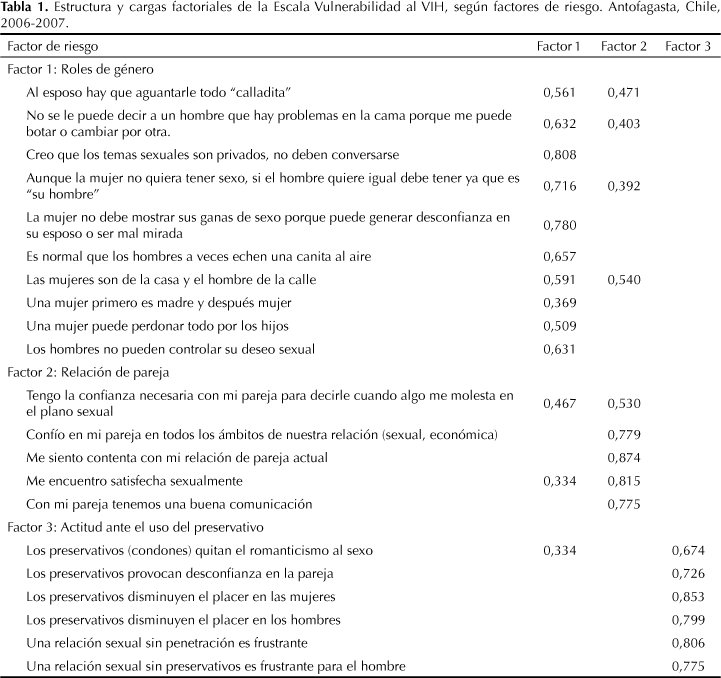OBJECTIVE: To evaluate HIV/AIDS vulnerability by risk factors in women at social risk. METHODS: Study conducted in a sample of 178 female homemakers (n=101) and female health providers (n=77) from Antofagasta, Chile, in 20062007. Homemakers were considered at social risk. HIV vulnerability was estimated through a 21-item instrument comprising three domains: gender roles; relationship with the partner; and attitude toward condom use. For determining the relative weight of each dimension to total vulnerability a multiple regression analysis was carried out using the instrument's total score as dependent variable and each domain as independent variable. RESULTS: Overall, the domain showing the highest relative weight was attitude toward condom use (0.542), followed by relationship with the partner (0.453) and gender roles (0.379). There were weight differences between homemakers: relationship with the partner (0.597), attitude toward condom use (0.508) and gender roles (0,403); and health providers: attitude toward condom use (0.638), relationship with the partner (0.397), and gender roles (0.307). CONCLUSIONS: The study results allows to inferring that there are differences in factors that determine HIV vulnerability among women and gender role is the best predictor of risk among those at social risk.
Women; Acquired Immunodeficiency Syndrome; Condoms; Health Vulnerability; Gender and Health; Health Knowledge, Attitudes, Practice; Chile




